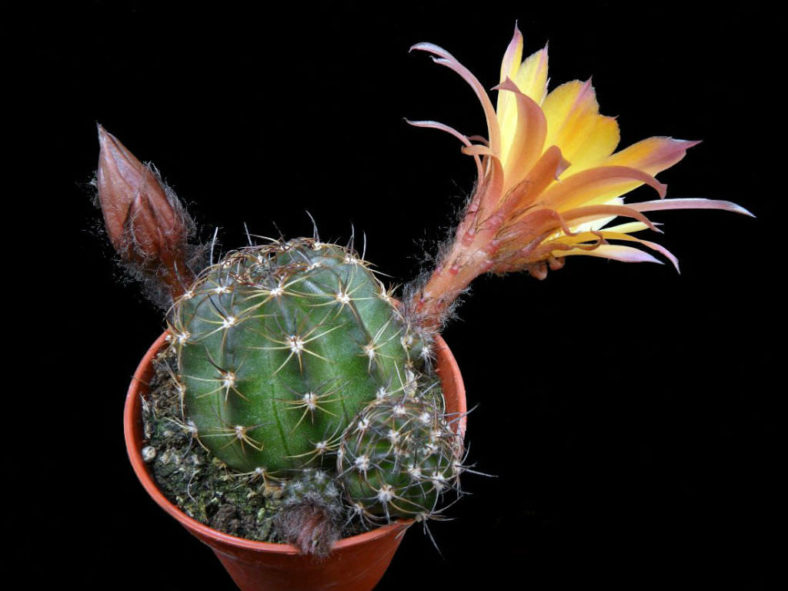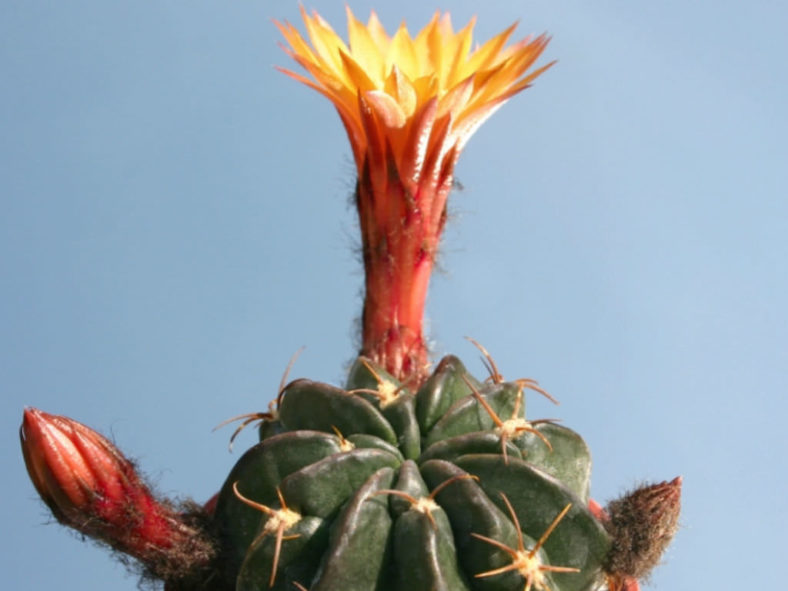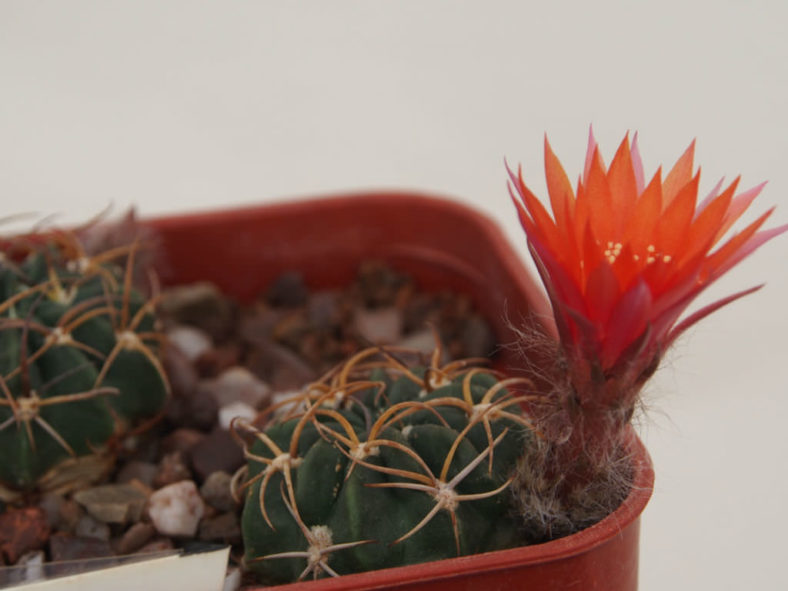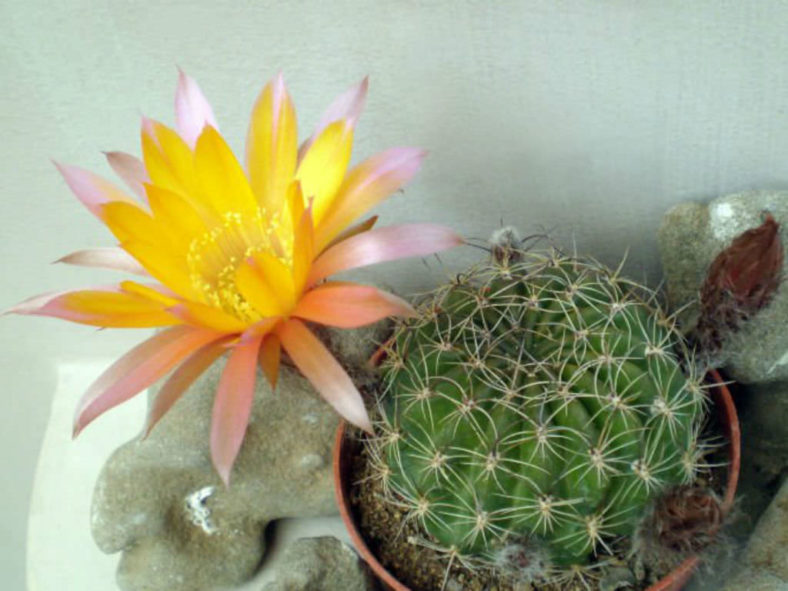Scientific Name
Lobivia tegeleriana Backeb.
Synonym(s)
Acanthanthus tegelerianus, Acantholobivia tegeleriana, Echinopsis tegeleriana
Scientific Classification
Family: Cactaceae
Subfamily: Cactoideae
Tribe: Cereeae
Subtribe: Trichocereinae
Genus: Lobivia
Origin
Lobivia tegeleriana is native to eastern Peru.
Description
Lobivia tegeleriana, formerly known as Echinopsis tegeleriana, is a small, usually solitary cactus with a spherical, egg-shaped, or slightly elongated stem with up to 16 ribs. The stem is dark green, often tinged purple in full sun, and up to 3.6 inches (9 cm) in diameter. It has up to 12 radial spines per areole.
The flowers are funnel-shaped, red, orange, or yellow with pink-orange throats and appear in spring.

Hardiness
USDA hardiness zones 10a to 11b: from 30 °F (−1.1 °C) to 50 °F (+10 °C).
How to Grow and Care
If you can grow cacti and succulents successfully, you can likely grow the Echinopsis species without too much trouble. Like many cacti, they prefer a drying period between waterings, even when slightly wilt. When you water, however, you should water deeply. The plant will noticeably plump up. The cactus mustn't be exposed to prolonged dampness and sitting water. Never let your cactus sit in a dish of water. Lastly, fertilize during the growing season for the best results.
Echinopsis can be easily rooted from offsets, which tend to cluster around the base of the mother plant. Cut offsets close to the stem, at the narrowest possible place. When rooting cacti from cuttings, let the fresh cutting dry out slightly on a paper towel and cut the cacti at the narrowest place possible. After a few days to a few weeks, depending on the size of the cut surface, the cut surface should have dried out and formed a callous or slightly rough opening. Once the callous has formed, place the cutting in a rooting mixture of fast-draining cacti soil.
Learn more at How to Grow and Care for Echinopsis.
Links
- Back to genus Lobivia
- Succupedia: Browse succulents by Scientific Name, Common Name, Genus, Family, USDA Hardiness Zone, Origin, or cacti by Genus
Photo Gallery
Click on a photo to see a larger version.


